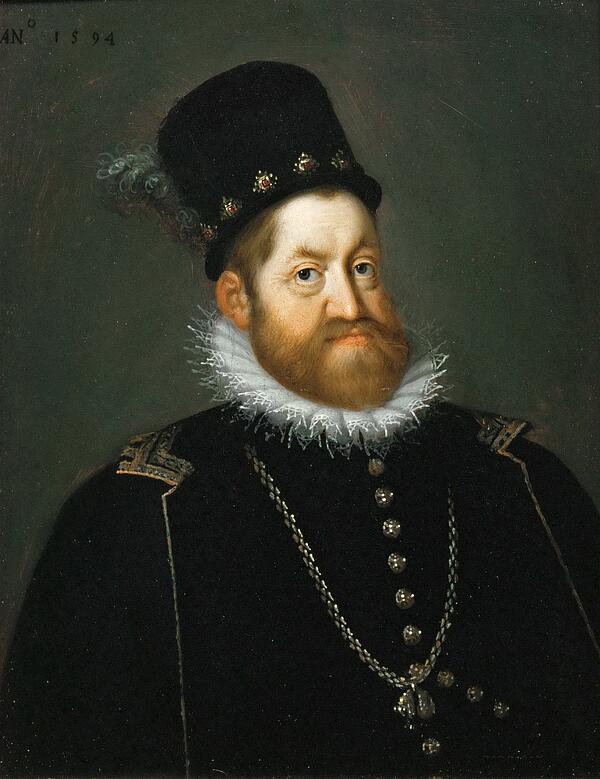Holy Roman Empire
The Holy Roman Empire was a feudal monarchy that, at its peak, encompassed present-day Germany, the Netherlands, Belgium, Luxembourg, Switzerland, Austria, the Czech and Slovak Republics, as well as parts of eastern France, northern Italy, Slovenia, and western Poland at the start of the early modern centuries.
But by 1600 the Holy Roman Empire had declined considerably. Germany had been at the heart of the Empire, but by 1600 it was divided into dozens of states governed by princes - each one battling for independence and power. In reality, power was held by 50 ecclesiastical princes and 30 secular princes. However, there were also countless dukes, bishops, counts, abbots and other rulers jostling for power.

The Electors
In the Holy Roman Empire electors were responsible for electing the Holy Roman Emperor. The electors were drawn from the senior rulers of lands within the Empire and held both autonomy and privilege - even though they were officially subservient to the Emperor.
The electors emerged sometime in the first half of the twelfth century. Over the centuries their authority grew until by the late 15th century they formed a distinct college. The composition of the college was as follows:
- Three spiritual or cleric electors:
- bishop of Mainz
- bishop of Köln
- bishop of Trier
- Four temporal or lay electors:
- count Palatine of the Rhine
- elector of Saxony
- king of Bohemia
- margrave of Brandenburg
- Each elector’s special office gave them particular duties. The electors duties included electing the emperor, holding a royal rank and precedence, proposing legislation and consult the emperor on all important affairs.
The Holy Roman Emperor
The first Holy Roman Emperor, Charlemagne, was crowned on 25 December 800. From then on, the Holy Roman Emperor evolved into an elected monarchy chosen by Prince-electors.
In the lead-up to the Thirty Years War, the Holy Roman Emperor was a territorial magnate. He owned land in Inner, Upper, Lower and Further Austria and also controlled Moravia, Silesia, Lusatia and Bohemia - the most valued area in the Empire. In 1576, when Rudolf II became Holy Roman Emperor, he made Prague his base.
Some historians argue that the ineffectual leadership of Rudolf II led to the Thirty Years War. While he successfully advanced the arts and occult sciences, his reign saw a number of political disasters. Matthias, the third brother of Rudolf, took on an increasing amount of the Holy Roman Empire’s work. However, Rudolf had not given Matthias permission to do this. The emperor’s inability to rule meant that the Habsburg Court was close to breaking up by 1600.
German Princes
By 1600 the German princes each grappled for power. Their power struggles played a significant role in starting the Thirty Years War. The most significant princes included the Elector of Palatine, Elector John of Saxony, Maximilian of Bavaria and the Elector of Brandenburg.
Divisions among Princes
The power struggles between the princes created tension in Europe which contributed to the Thirty Years War. The power of the Holy Roman Empire diminished as the strength of the independent princes grew, but the rivalry and disunity of the princes also grew - fuelled by divisions between Lutherans and Calvinists.
With no strong central authority (such as that formerly exerted by the Holy Roman Empire) to put down anarchy, small domestic wars broke out in many places. What began as an opportunity for greater autonomy and freedom of religion turned into major disputes over territorial, dynastic and religious issues.
Divided Protestant States
Religion was at the heart of Germany’s problems. The northern states were still divided over Protestantism. After the Religious Peace of Augsburg (1555), Protestant states had split along two different lines.Some states wanted a less rigid approach to religious dogma - known as the Philippists. These states believed that the ideas of Calvin and Zwingli could be combined in Protestant theology. The hardline Lutheran states opposed these states. In 1577 these states produced the "Formula of Accord" which clearly stated their position - a move that the Philippist states responded to by openly converting to Calvin. These divisions within the Protestant world meant that these states were unable to join together to fight Catholicism.
See also: North Europe 30 Years War
MLA Citation/Reference
"Holy Roman Empire". HistoryLearning.com. 2025. Web.
